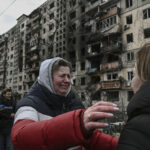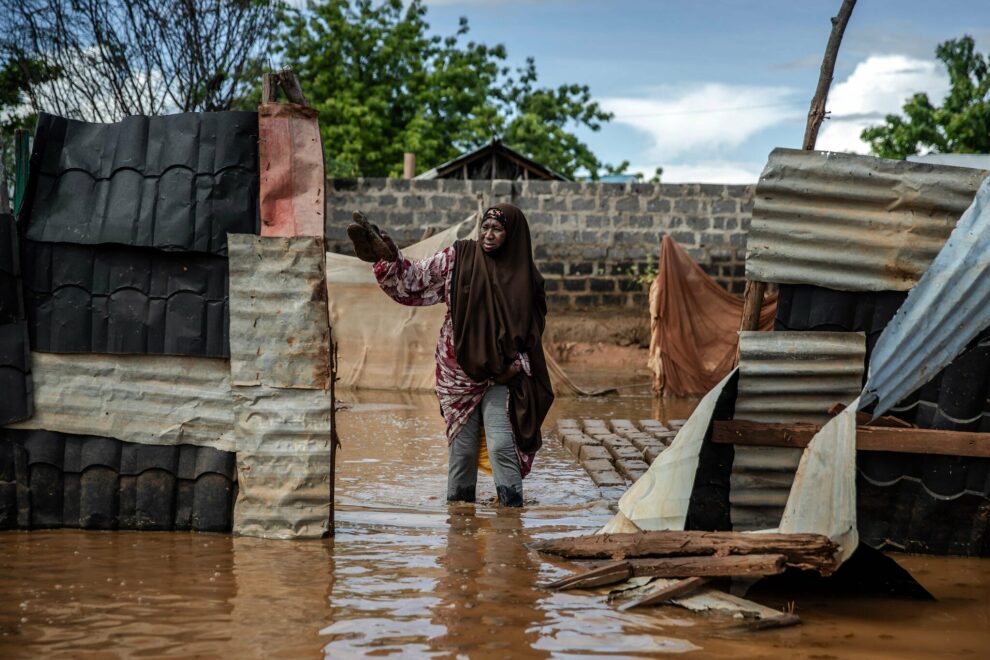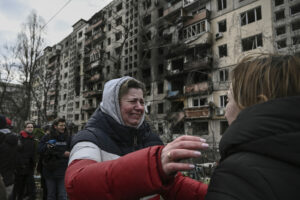In the Mororo area at the border of Garissa and Tana-River counties, eastern Kenya, residents are enduring the aftermath of severe flooding caused by recent heavy rainfall.
Carrying sacks of belongings, they make their way through murky yellow waters, reaching thigh-deep on adult men in some areas, towards the neighboring town of Madogo. The road connecting Garissa to Madogo, near Mororo, suffered washouts last Sunday and remains impassable.
On the Madogo side, workers wearing yellow safety vests attempt to maintain order as people, livestock, and motorcycles navigate the chaotic, narrow road. With both sides of the road eroded, the width is barely sufficient for two cars to pass.
The persistent rainfall, attributed to the El Nino phenomenon, has led to severe flooding in the Horn of Africa, including Kenya, following its worst drought in 40 years. According to the Kenyan government, the death toll from the floods had risen to 142 as of Friday, with more than 460,000 people displaced, while 37 counties have been affected by the floods.
James Bundi, a local farmer, pointed to his submerged field nearby, where he had planted chili peppers, tomatoes, and onions in July. The crops are now completely submerged, and children wade through waist-deep muddy water for fishing.
“I can’t do anything now except wait for the floodwaters to recede,” Bundi said.
The Tana River, stretching nearly 1,000 km, overflowed, submerging surrounding lands. The Ministry of Interior revealed Thursday that 6,500 hectares of farmland along the Tana River in Garissa County have been inundated.
In the northern part of Madogo, 250 people from about 100 households are living in a camp with makeshift tents made of plastic sheets and tree branches. These temporary shelters house villagers from the nearby Adele-Madogo village, who were forced to relocate here three weeks ago due to the floodwaters engulfing their homes and fields.
According to Babota Yakub Dukale, the village chief, the camp lacks electricity, and essential supplies such as food, drinking water as well as medicines, and even cooking fuel.
“We can only afford one meal a day per family, and it’s just rice. Food is very expensive since the floods, a cabbage now costs 600 shillings (around 3.92 U.S. dollars),” said 60-year-old Athmani Mwaura Manyara, a father of eight.
Manyara, who is a teacher who owns a farm in the village, said that aside from the scarcity of food and medicine, the hygiene situation in the camp was dire. “This is private land, we’re not allowed to build toilets. We have to borrow nearby or find our own solutions,” he explained.
December is generally hot in the region, with an average temperature of nearly 30 degrees Celsius. The combination of rain and high temperatures may accelerate the spread of diseases, especially in these poor living conditions. According to residents, there are already “several legal or illegal settlements” near Madogo.
Manyara expressed uncertainty about when they could return home, considering Kenya’s rainy season may persist until early February next year.
“The last time we moved to a camp like that was four years ago, but this flood is more pronounced,” he said, showing pictures on his phone taken three days ago, with three-quarters of the camp submerged, water reaching his shins.
Life, however, goes on. Manyara and other villagers have organized five classes in tents there, providing education for around 60 children.
Beyond Kenya, Somalia and Ethiopia are also grappling with floods triggered by heavy rainfall.
According to a report from the United Nations Office for the Coordination of Humanitarian Affairs (UNOCHA) Friday, more than 1 million people were affected by the floods in Ethiopia’s Somali region alone, the worst impacted by the flooding.
Source: Xinhua















